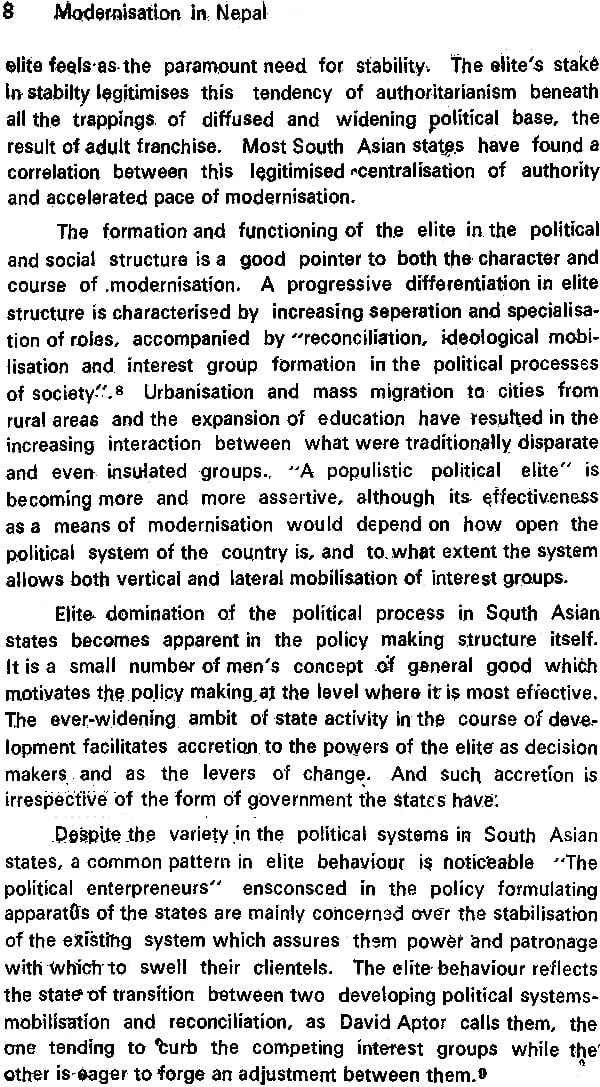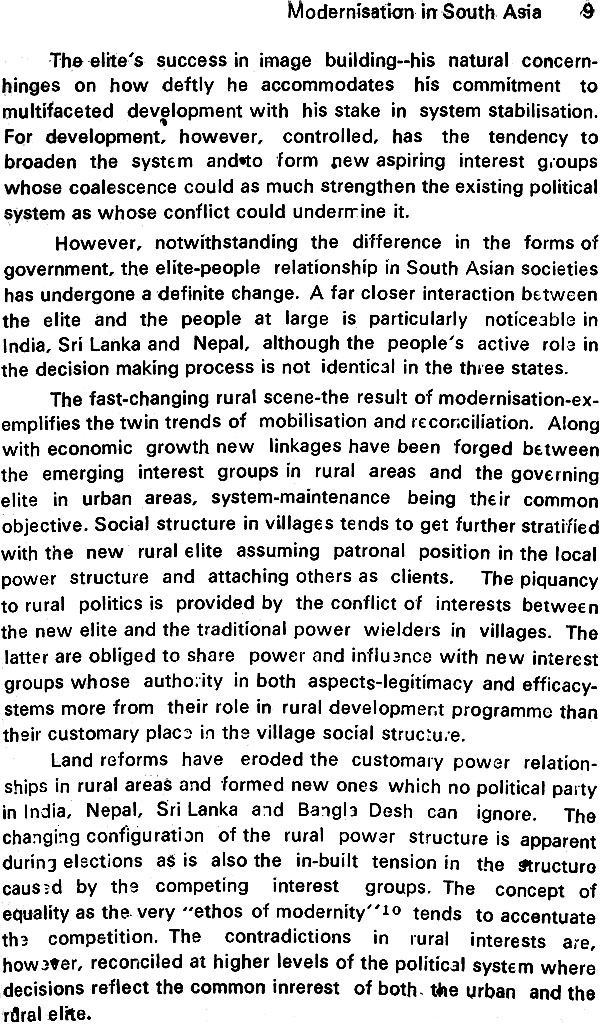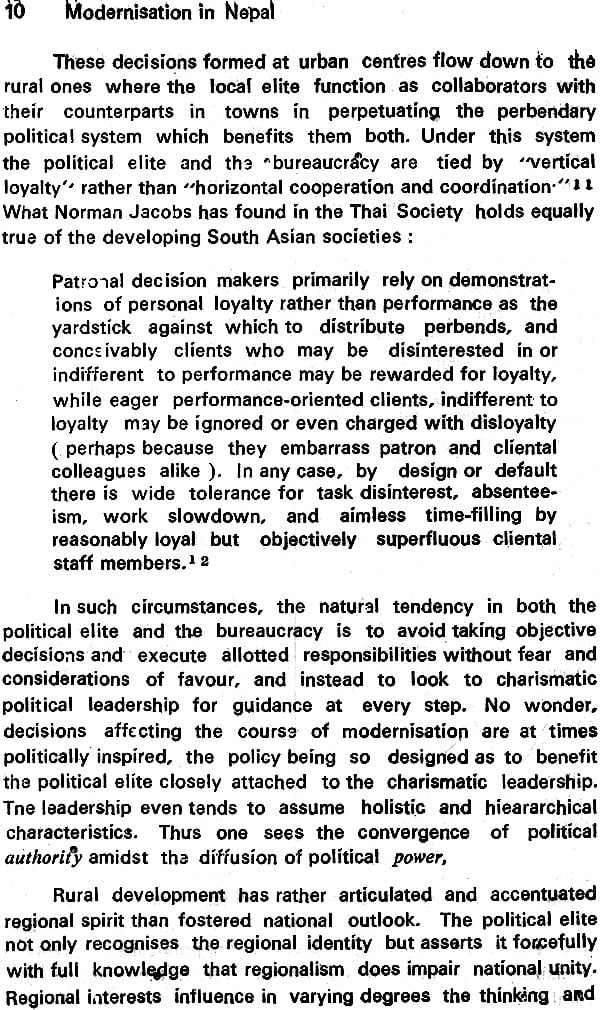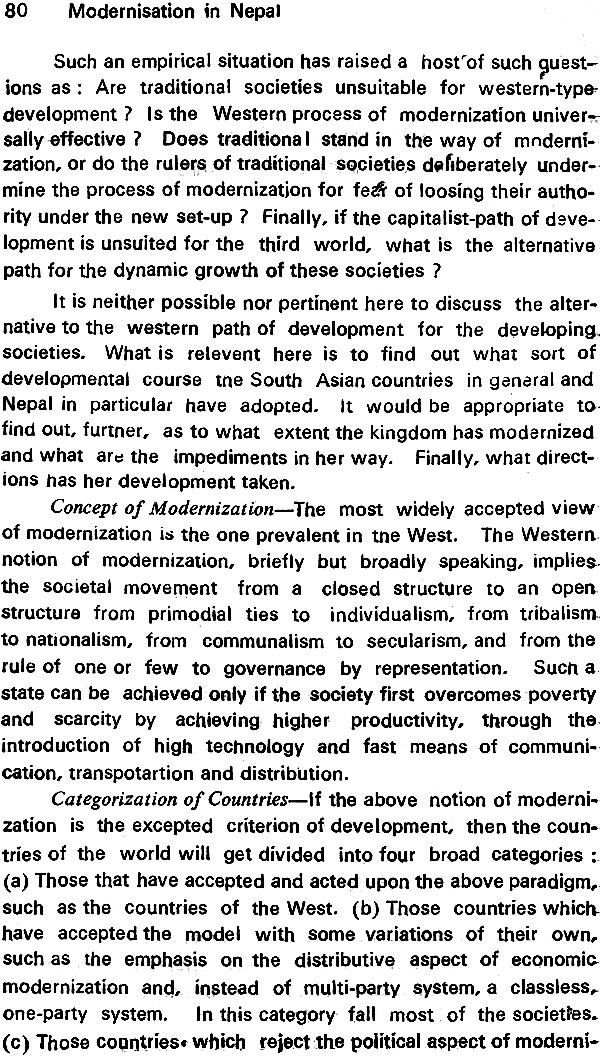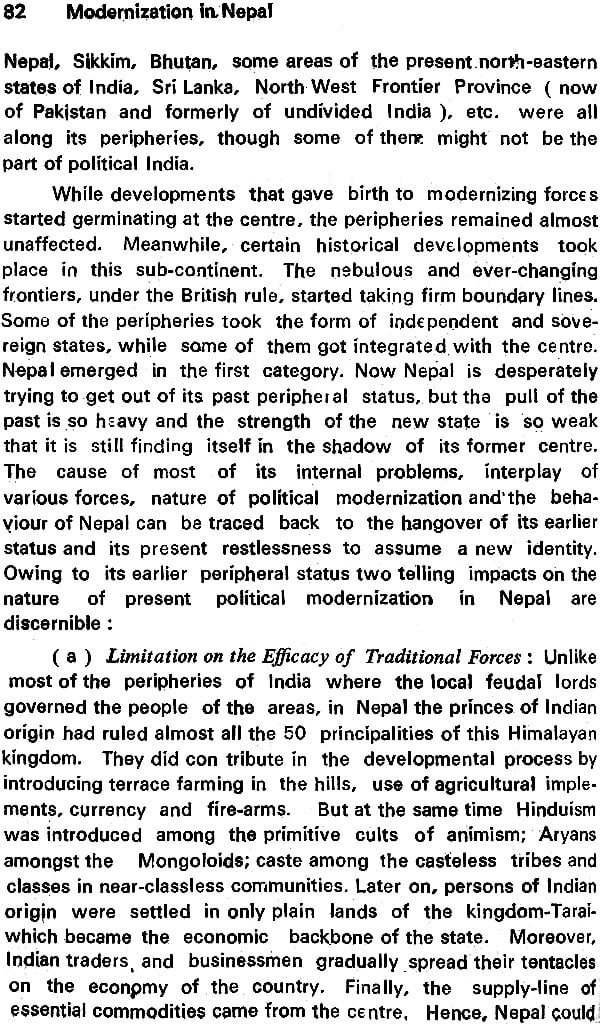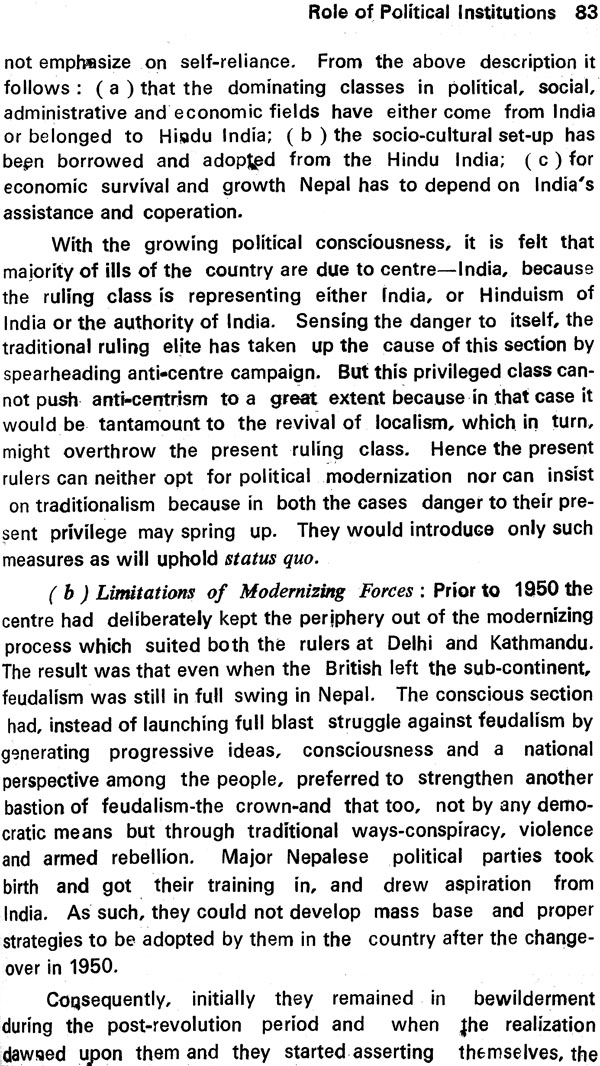
Modernisation in Nepal (A Rare Book - Slightly Pinholed)
Book Specification
| Item Code: | NAG675 |
| Author: | S.K. Srivastava (Editor) |
| Publisher: | Banaras Hindu University |
| Language: | English |
| Edition: | 1986 |
| Pages: | 248 |
| Cover: | Hardcover |
| Other Details | 8.5 inch X 5.5 inch |
| Weight | 350 gm |
Book Description
Foreword
The process of modernisation owes its origin and development in the Western countries late in the 19th century. The modernisation can not be considered as a concept or a theory, nor can it be equated with westernisation. The process has resulted from industrialisation and commercialisation in the West. The modernisation has been characterised by changes in technology, increasing use of inanimate power, growth of trade and commerce, breakdown of traditional feudal structure and rise of modern polity and economy and above all development of scientific world view according to some well known scholars.
Perhaps, the studies on modernisation have aroused the largest interest of a great number of social scientists from various disciplines and, therefore, modernisation can claim itself to be the centre of interdisciplinary perspectives and approaches. But the most important form of ideological response to modernisatlon has come from the forces of nationalism in the Third World countries. Modernisation, therefore, creates challenges from traditional societies of Asia and other Third World countries. The process of modernisation is an integrative one and any polarity between tradition and modernisation is illogical, since tradition may also modernise itself and modernisation may change-itself into different facets of tradition.
The processes of modernisation in Nepal, India and other South Asian countries will have to be understood from the new emerging trends and patterns from the blend and synthesis between forces and processes of tradition and modernisation during last one hundred and fifty years or so.
The present volume of papers submitted by different eminent scholars consists of various aspects of their thoughts on political economic and social modernisation of Nepal and South Asia. The contributors to the volume reflect an interdisciplinary approach and cover a broad canvas of socio-economic and political scenario of Nepal.
The contributors have, therefore, given their own perceptions of social reality of modernisation of Nepal which represents a unique blend of traditional structure and modernisation of tradition in terms of emerging economy and polity which stand at the threshold of a new era. We hope and trust that Nepal shall emerge as a great example of this synthesis and usher in a new' horizon of development, a new path of progress and a new perspective of growth by the turn of the century.
I congratulate the authors of the papers in providing new insights into the complexities of evergrowing and changing scenario of Nepal. I am confident that they would inspire the scholars of coming generations who want to see new horizons of peace, prosperity and progress in the Himalayan Kingdom, of Nepal.
Contents
| Foreword | ||
| Acknowledgement | ||
| Contributors | ||
| 1 | Modernization in South Asia: Perspective and Problem | 3 |
| 2 | Development Sans Renaissance | 14 |
| 3 | A Note on the Study of Political Transition in the Third World | 22 |
| 4 | Modernization of Nepal: A Theoretical Approach | 27 |
| 5 | Modernization in South Asia: Patterns and Trends | 36 |
| 6 | The Concept of . Political Modernization with Particular Reference to South Asia | 42 |
| 7 | Hypothetical Spectrum of Nepal as a Zone of Peace Vis-a-Vis South Asia | 54 |
| 8 | Tangled Politics of Nepal | 61 |
| 9 | Bureaucracy in Nepal: A Shift from Tradition to Modernity | 69 |
| 10 | Role of Polical Institutions in the Modernization of Nepal | 79 |
| 11 | The State as Power Resource in Nepal | 90 |
| 12 | Modernisation and Political Participation: The Nepalese Context | 97 |
| 13 | Monarchy as an Agent of Modernisation in Nepal | 112 |
| 14 | Role of Political Parties in Political Modernization of Nepal | 132 |
| 15 | Resource Mobilization in Nepal | 149 |
| 16 | Industrial Development, 1950•1980 | 168 |
| 17 | Land Reform: The Key to Meaningful Modernization of Nepal | 182 |
| 18 | Nepal's Economic Growth: Aspects of Modernization | 212 |
| 19 | Changing Status of Women in Nepal | 220 |
| 20 | Role of Nepali Language and Literature in the Integration and Modernization of Nepal | 227 |

